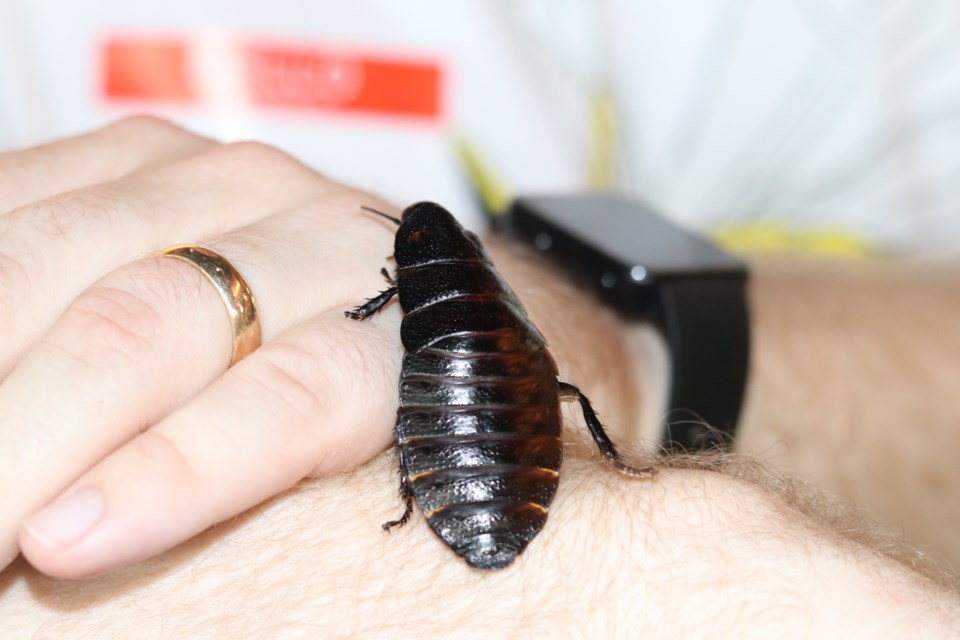The thought of willingly hanging out with cockroaches might make your skin crawl, but those in the know at Guelph Bug Day Sunday said they get a bad rap.
“Cockroaches in the wild are really important detritivores, meaning they eat waste material and other things like decaying wood and leaves,” said Bug Day volunteer Graham Ansell. “They’re really important in the breakdown of dead trees and recycling nutrients in the environment.”
He added that something most people likely don’t know is that only a few species of cockroaches actually infest homes. Ninety-nine per cent of them are wild and will never even enter a home, according to Ansell.
“Even the ones that enter people’s homes don’t spread disease or anything, so they get a pretty bad rep for being so environmentally useful,” he said.
Guelph Bug Day returned in-person in The Arboretum for the first time since before the pandemic, attracting well over 1,000 people.
Children and families flocked to The Arboretum to get up-close-and-personal with bugs like giant snails and cockroaches. By noon, children were already asking when the next Bug Day would be.
Among the festivities were cockroach races and an information booth where you could hold a hissing cockroach.
The cockroaches being raced are a species called Dubia, which are from South America and usually used as reptile feeders, like crickets or mealworms.
Meanwhile, attendees inside could hold hissing cockroaches, which are from Madagascar. These cockroaches are typically bigger than the ones you’d find in your house, growing up to four inches long.
Think seeing one would make you scream? Turns out, seeing you might make them scream too.
When they get stressed or are trying to ward off predators, they forcefully expel air through small holes in their body, kind of like letting air out of a tire.
“It’s basically a scream,” said volunteer Carolyn Trombley, who took care of the hissing cockroaches for four years.
“People are afraid of what they don’t know. If you see a cat or a dog, you’ve grown up with enough of them that you know if it;s angry at you, if it's gonna bite you. With a roach, what does it mean if it’s running, what does it mean if it hisses at you. When people hear that, they go, oh God, I don’t want to touch it, because they don’t know what it’s going to do?”
But she assures they are “very chill. You can hold them for a long time.”
Some people even keep them as pets. However, you won’t find them running in the wild in Canada, as they can’t tolerate freezing conditions.
Trombley thinks teaching children more about insects like these is important, because “it helps them not be scared of everything.”
For instance, she said when you’re walking in the woods and see something move, you might be wondering what it is out of fear, but experiences like this can change that fear to curiosity and excitement about the world around you.
She loves seeing the kids come in to hold them. Some will run right up and want to hold them right away, while others will start by looking, then touching, and then asking to hold
“Some start by looking at it, then touching it with a finger, then usually by the end they’re holding it. It’s a really nice experience for them to have a bit more wonder and excitement about what’s out there, instead of fear.”
